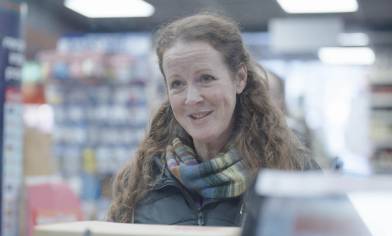Doing your research
Now you have a few pieces of the jigsaw, it’s time to start putting them together.
The first thing to do is understand what your customers are searching for. You can do this by simply using your knowledge of your business area and running lots of searches for the products or services you sell to see what kind of results Google returns. Try putting some related searches in too – the broader your research, the better your optimisation will be.
There are various tools available to help you learn about what your customers are searching for. Of course, just knowing the search terms (or keywords) is only one factor; knowing how many people are searching for which terms will help you decide where to focus.
- AnswerThePublic is a useful tool for finding out which questions your audience are asking
- Moz has numerous free SEO tools
- Google Console (if you’re a bit more advanced) can help you track trends over time
As with most tools, there are free and paid-for versions. But there’s a lot you can learn for free. So it’s only worth paying for SEO services if you’re confident you know how to make the most of them.
Website ‘architecture’
Once you’ve learned which searches your audience are making and what your competitors are doing – especially those ranking highly – you can start to make changes to your website and selling pages.
Before getting into detail, remember that your pages on platforms like Etsy, eBay, Amazon and social media platforms are only likely to rank highly if there are few business websites competing for those positions.
Include keywords
Decide which keywords (search terms) are most important based on relevance to your business and volume of searches. Then make sure these are included in the text (known as copy) on your website. But don’t do it too much. That’s called ‘keyword stuffing’ and can be penalised by Google.
The best place to include keywords are in titles and subtitles, as well as higher up pages. Stick to single topics on each page if possible, so you can focus on select keywords per page.
Link throughout your website
On any given page, make sure there are links – both embedded onto text like this and as a list of linked page titles – to other, relevant pages on your website.
Get external links
If your website is linked to from other, unrelated websites, this can really help signal to Google that your website is authoritative.
These are called backlinks. There are good backlinks and bad backlinks. If the website linking to you isn’t trusted, this can actually harm your ranking. The best backlinks you can get are from reputable press. So it might be worth contacting local online news sources and see if they’d be interested in running an article about you that includes a link to your website.
Include FAQs
These can be very useful for customers. Usually included at the bottom of pages or on their own, dedicated page (or both), FAQs can signal to Google you’re servicing your customers’ needs beyond simply selling them something.
Language
Keep your language simple, brief and relevant. Make sure every page has a clear function and that it’s of use to visitors – your website is not the place to try and become a famous writer (unless that’s what your business does).
Ongoing promotion and updates
Use Google Business Profile
If you have a physical business – as in a retail property customers can walk into – make sure you’re listed with Google Business Profile and all your details are up to date. This will help people discover your business locally and can be a very helpful way of promoting footfall.
Use social media well
Your website and social media channels should work hand-in-glove. If you publish new content on your website, share this on your social channels. If you have an event, such as a flash sale, make sure you promote this simultaneously on your website and social channels.
Keep everything up to date
Managing your website means you should be keeping a constant eye on it. That doesn’t just mean keeping track of visits and sales. You should also keep your content fresh, removing anything that’s out of date and producing more regularly.
In summary
SEO can be tricky to get right, and you won’t see results instantly. It tends to take at least three months for changes to start having an effect. There’s also much more to it than we can go into here. But this should get you started on your path to boosting your business’ rankings and getting your product out there.




















